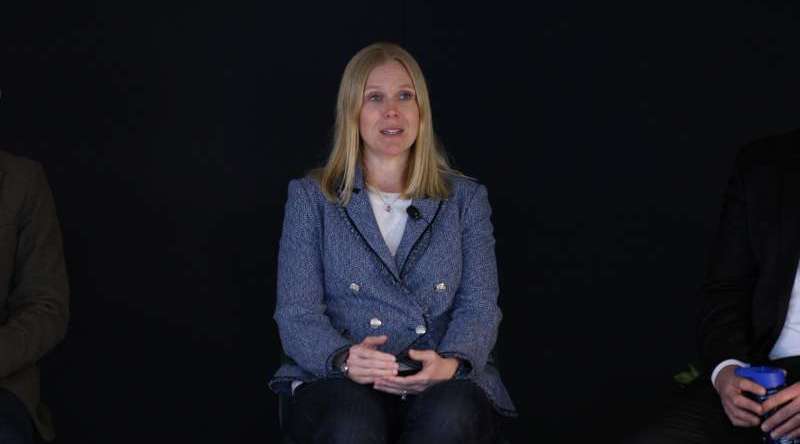
U.S. Air Force Chief Information Officer (CIO) Lauren Knausenberger detailed her team’s efforts on the zero trust security migration during a Billington Cybersecurity webinar this week, and said that move to new security paradigm has generated traction and “unity of effort unlike I have seen in my tenure.”
“With zero trust … the hype is real,” Knausenberger said during the May 4 event. “It’s happening. We are going to spend billions of dollars on this, and we have done the work to make sure that it is going to stick,” she said. “I have not been this excited about an effort in the DoD in a really long time.”
“I am seeing the passion from the engineers; I am seeing the industry just really show up and give great insight,” the CIO said. “With zero trust, it’s a vague enough term – even though we’ve defined it – and it incorporates a new take on pretty much everything we’re doing in cybersecurity and data tagging, the future of networking. There is so much, that actually zero trust is going to have wide applications. It is going to get billions of dollars of investment.”
“It’s a unity of effort unlike I have seen in my tenure,” Knausenberger said.
The Defense Department (DoD) released its long-anticipated zero trust strategy and roadmap in November, outlining how the agency plans to fully implement a department-wide zero trust cybersecurity framework by fiscal year 2027.
Just last week, Federal Chief Information Security Officer Chris DeRusha said that the Biden administration is requesting roughly $12 billion in fiscal year 2024 funding in connection with efforts to roll out zero trust security across the entire government.
Zero Trust Plays a Role in JWCC
Knausenberger highlighted the role that zero trust plays as a “forcing function” to move the Air Force to the cloud and implement modernization at large across the DoD.
Late last year, the Pentagon selected four tech giants – Amazon, Microsoft, Oracle, and Google – for its Joint Warfighting Cloud Capability (JWCC) contract.
The JWCC is a multiple-award contract vehicle that is intended to provide the DoD the opportunity to acquire commercial cloud capabilities and services directly from the commercial cloud service providers at the speed of mission, at all classification levels, from headquarters to the tactical edge.
“That could be a really game changing contract in the marketplace, and the way that we look at that is, this is great,” Knausenberger said. “This is DoD saying, ‘Hey, we’re going all in on cloud, we are funding cloud, we’re all in on multi-hybrid cloud.’”
The Air Force CIO said her team’s focus right now for the JWCC contract is at the secret and top-secret classification. “That’s where we’re going to start putting our dollars,” Knausenberger said, “and we’re going all in on JWCC.”
“If it doesn’t have everything we need on day one, we’re going to work and we’re going to make sure that it does,” she said. “I think we’re going to become a pretty solid cloud business organization together through this.”
Generative AI Hype Cycle
During the webinar, Knausenberger also discussed how the Air Force is racing to stay on top of the generative AI hype cycle and is set to release policies soon to ensure the service branch is safely using the tool.
The service branch needs to seize the opportunity, she said, needs to do it safely.
“It is an incredibly powerful capability, and if we only see this as a threat and only focus on mitigating the threat, it will be more of a threat because our adversaries are focused on the opportunity, and we’re only focused on the defense,” Knausenberger explained.
The CIO said the forthcoming policies for generative AI will entail guidance and guardrails on things “people already know” – like not sharing classified information with an unclassified tool like ChatGPT.
Knausenberger is stepping down from her Air Force CIO post on June 2. While she didn’t detail much about her plans after the Air Force, she said she will not be bored.
“I won’t be as close to the mission as I am now, but I will still be a friend to the Department of Defense,” Knausenberger said. “I won’t be too far away from the national security space. I’m looking forward to the next chapter, and I would not be surprised if five to 10 years from now I feel the itch and there’s some sort of a compelling problem or mission that pulls me right back into service.”
